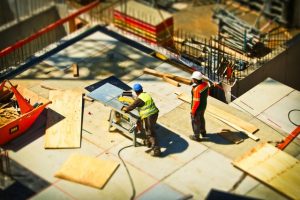There is a lot of talk about energy efficiency these days. Sometimes, with everything we hear, we can feel anguish and become overwhelmed because we are not doing enough. However, there are simple gestures, many free, that can help you be more efficient.
 Using Windows Properly Is The First Step
Using Windows Properly Is The First Step
Very easy. Free.
If you have cross ventilation (facing windows and with different orientations), do not waste it. In summer, leave them open at night and be sure to close first thing in the morning. This way, you can lower the interior temperature a few degrees. Even if you have to turn on the air conditioning in the end, you will do it much later and gain valuable hours of free comfort.
You must close them in the hottest hours. Do not think that by having the windows open and that some air enters, you will be able to refresh the house. If it is 35 degrees outside and you have 27 inside, there is no point in opening, no matter how much airflow you think it generates.
In winter, lower all the blinds as soon as it gets dark. This simple gesture makes you lose less heat unnecessarily through the glass.
Replace the incandescent bulbs in your home with led lamps
Very easy. Less than 5 dollars per bulb
They consume much less and heat rooms less. In summer you will appreciate it, especially if you have many recessed lights or a dark house where you have to keep the lights on for a long time.
Install Thermostats And Keep The House Always At A Constant Temperature In Winter.
Very easy. Less than $ 100
Think that if you let the house cool, it will take (and spend) much longer to reheat it and have a comfortable temperature again. In general, you save more by maintaining latent heat than by turning the boiler on and off several times a day. You will use many energy resources to heat the envelope (walls, ceiling, and floors) over and over again.
One More Step Is To Put More Efficient Glass On Your Windows
Easy. About 100 dollars per m2 of window
Low-emissivity glasses with a solar control system can be a good alternative to conventional glasses, but they are not universal. They work from a treatment done to the interior glasses (in double and triple systems) whose function is to lower the transmittance of the glass, that is, to make them more insulating. This results in less heat loss in winter and less unwanted radiation from the sun in summer. However, the solar gain in winter is also lower, and you will take less advantage of the “warmth” in more exposed windows. At certain exhibitions and geographic locations, it may be more desirable to gain that heat in winter than to protect yourself from it in summer; it is a matter of analyzing the case with some calculations.
Before making the change, make sure you have a wall with a good degree of insulation. Exchanging windows or glass for high-efficiency ones on poorly insulated facades can cause condensation to damp at the junction between materials.
There are many variables, and it is worth having an expert to advise you. The savings can be a lot, but you can also make an investment that does not return the expected amortization.
Install Awnings To Protect You From Solar Radiation In Summer
Easy. About $ 300 per window
If you place awnings on the most exposed windows and protect them when the sun hits them, you will notice the difference. To be efficient, the awning design must adapt to the orientation in which it is installed.
- It must be at least 45º inclined in west-facing windows and have a fabric with high UV protection.
- When the orientation is this, you can install a simpler fabric because the solar radiation in the morning is less than in the afternoon. However, it should also be tilted if you want it to work well.
- In pure south orientations, sometimes, the eaves of the window are sufficient. In those cases, installing a screen blind inside can be enough to improve interior comfort.
- North-facing windows do not need an awning.
The fabric, in any of the orientations, must be micro-perforated and guarantee ventilation. Otherwise, heat will build up between the awning and the window, creating an unwanted greenhouse effect.…
 Among these options, the ideal alternative for those who are looking for a more economical way to acquire a property, have time to wait, and are in no rush to deliver it, is to buy a home in plans.
Among these options, the ideal alternative for those who are looking for a more economical way to acquire a property, have time to wait, and are in no rush to deliver it, is to buy a home in plans.
 A house is a difficult financial decision to make mainly due to the large financial investment that this implies in the life of a person. In deciding which way to invest money the most, a question arises that we have all asked ourselves: what is better: buying or building a house? And the answer is that it is relative and that relativity depends on a great variety of elements that you must decide according to what you expect from your ideal home.
A house is a difficult financial decision to make mainly due to the large financial investment that this implies in the life of a person. In deciding which way to invest money the most, a question arises that we have all asked ourselves: what is better: buying or building a house? And the answer is that it is relative and that relativity depends on a great variety of elements that you must decide according to what you expect from your ideal home.
 Programmatic advertising to improve the relationship with potential buyers
Programmatic advertising to improve the relationship with potential buyers Virtual tours to improve the user experience
Virtual tours to improve the user experience The most common is to entrust all the work to a Construction Company -which will become the Main Construction Company-. This can contribute to its workers and/or subcontract other companies and self-employed workers to carry out the different work items.
The most common is to entrust all the work to a Construction Company -which will become the Main Construction Company-. This can contribute to its workers and/or subcontract other companies and self-employed workers to carry out the different work items. Who puts the “common things”?
Who puts the “common things”?